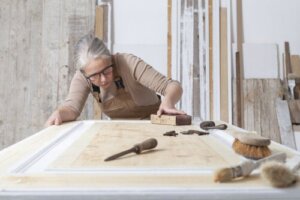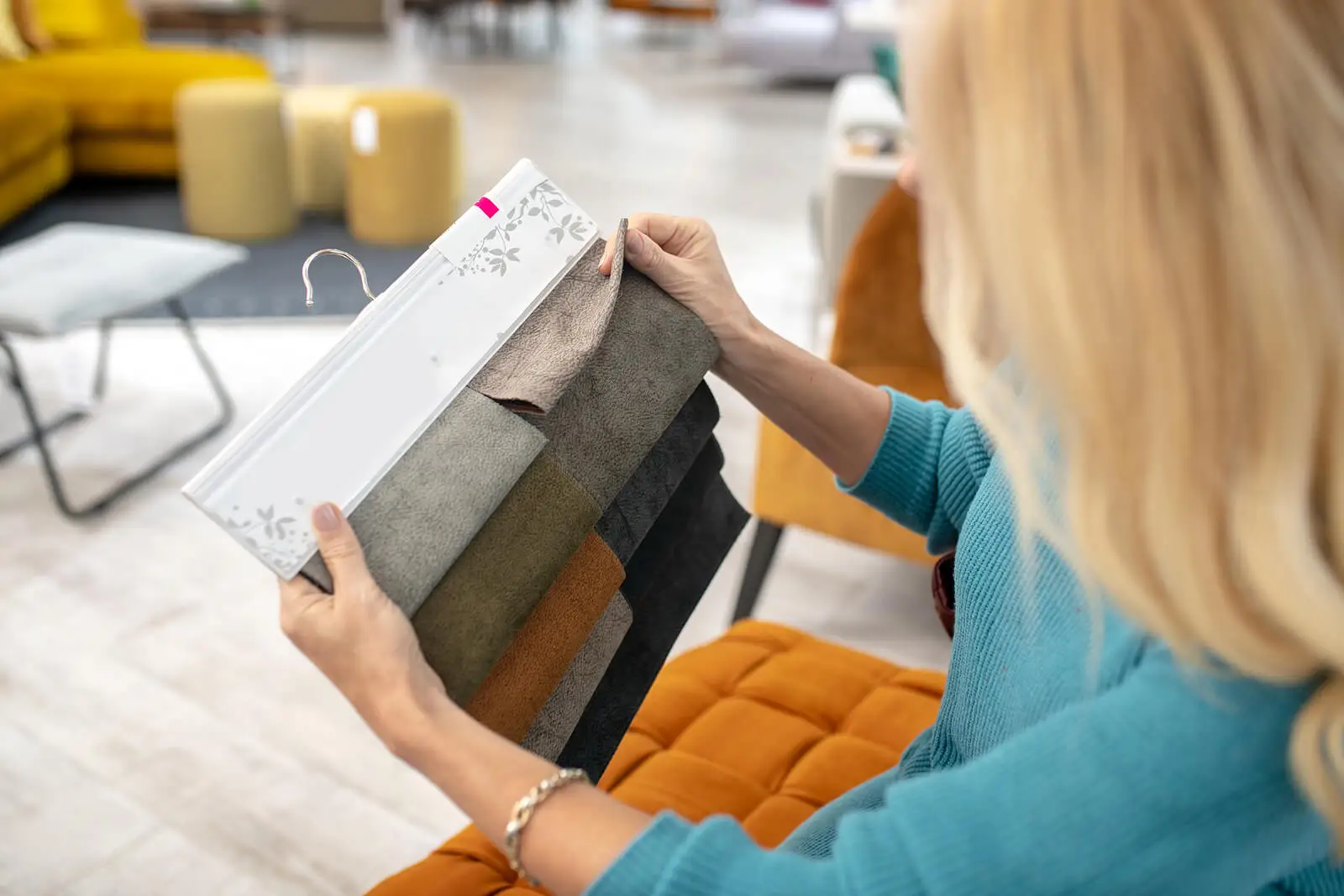Upholstering Doors in Your Home: Steps and Tips

Although some people think that upholstery is exclusively for armchairs and stools, the truth is you can also upholster doors. Of course, it requires some time, patience, and a good technique. Below, we’ll give you a step-by-step guide to upholstering your doors.
Upholstering doors: A step-by-step guide
There are several materials to make the upholstery, such as fabric or leather, depending on the type of decoration intended. In any case, all use a similar set of tools, including cutting elements, adhesives, and glues. Ideally, you should wear gloves to protect your hands.
Choosing the materials for upholstering doors
The first step is to identify the materials to use. This depends on the type of door and the desired decoration. Among the most common options, you can find chipboard, artificial leather, and eco-leather.
Another important material is the filling. Prior to upholstering, place a layer of felt, wool, or foam rubber for padding.

Tools
As for tools, you must have colorless or aerosol adhesive. It’s important that it doesn’t contain toluene, a solvent intended for paint. In addition, it’s a good idea to have other elements at hand, such as the following:
- Scissors
- A knife or cutter
- A hammer
- Upholstery tacks
- Thick thread to mark the design
- Painter’s tape
- Three meters of stuffing and upholstery material
Like this article? We think you may also like to read: How to Decorate with a Shaker Style in Your Home
Take down the door
To begin, the door must come off the frame. Place it on a firm surface, be it a table, two easels, or a blanket on the floor. Also, you should remove the locks and hinges.
After this, cut the filler material to the length of the door. At least 1.5 centimeters should be left over the entire frame. In other words, there should be a space on the door free of felt or foam rubber.
Apply the first layer
The next step in upholstering the doors is to spray them with adhesive. Once it has been spread over the entire length, the padding must be placed very carefully, as it will be difficult to move it if it’s fixed. In cases of thin materials, such as thin felt, two layers may be necessary. It’s important that a cushioned effect is achieved.
Apply the upholstery
While the padding is drying, the material chosen for upholstery should be cut. Make sure to leave an excess of three centimeters – both in length and width – in relation to the size of the door.
Then, take the glue and spread it on the parts that were left free of stuffing to cover all the edges well. Once this is done, the fabric or leather is placed on the adhesive, again with great precision. Finally, let it dry.
You can add some weight on top to speed up the drying process.
Decorating by upholstering doors
After at least 30 minutes of drying, you can use the adhesive tape and thick thread to mark the design that will later give the studs. One of the most popular designs is the rhombus. The better the thread, the more aligned the drawing will be.
Then, with the hammer, the tacks are nailed one by one. They should be well distributed and with a similar distance between each one.
Extra cuts and finishing up
When the decorative design is finished, it’s necessary to let it dry for a while longer and then cut the excess upholstery material with a cutter. This includes making holes for doorknobs and locks.
If you want to do both sides, just repeat the process. The door will have a facade that’s as fresh as it is shiny!
The advantages of upholstering the doors of your home
Although it seems to have only an aesthetic purpose, upholstering the doors has a number of benefits for the home, ranging from better sound insulation to the greater resistance of the materials.
Say goodbye to moisture
While not all materials are equally strong, in general, upholstering doors protects them from the effects of moisture, a common problem in the deterioration of furniture.
Extend the lifetime of your doors
Placing a layer of padding and another layer of fabric offers an extension of the life of the door. Its cushioning effect makes it more resistant to knocks and difficult for them to reach the bottom.
For this reason, in cases where it’s in bad shape, it will be much easier and cheaper to replace the upholstery than the entire door.
Cleaning and wear
It is common for doors to stain, rust and wear over time, whether they are wood or metal. Upholstery prevents these effects from wearing through, and care is simple.
Depending on the material, different cleaning products can be used. For synthetic leather, however, it’s best to avoid chemicals. A damp cloth isenough in these cases.

Improved sound insulation
Another great advantage of upholstering doors is the improved sound insulation it produces. By adding layers of felt or foam rubber padding, you’ll muffle the sound, making it an ideal technique for musicians who want to rehearse without affecting the aesthetics of their home.
We think you may also like to read: Does Listening to Music Help You Study?
Upholstering doors is a great decorative option
Upholstering doors not only have a protective function; some people choose to do this just for the decorative effect. Of course, each upholstery material varies and the choice of upholstery material must take into account how it blends in with the rest of the interior furnishings.
If you make the pattern with studs on synthetic leather, the designs will vary. Different rhomboid shapes are common, but there are also square or circular ones. It isn’t necessary to do this on every door in the home. In general, if choosing the entrance door, you can leave the rest of the doors in that room without upholstery.
All cited sources were thoroughly reviewed by our team to ensure their quality, reliability, currency, and validity. The bibliography of this article was considered reliable and of academic or scientific accuracy.
- French L. Instructions for Upholstering a Door [Internet]. The Sprouce [actualizado en Nov 04 19; citado en Dic 7, 22]. Disponible en: https://www.thespruce.com/how-to-upholster-a-door-1313489
- Harding L. How to Upholster Door Panels. [Internet]. eHow [citado en Dic 7, 22] Disponible en: https://www.ehow.com/how_7278532_upholster-door-panels.html
This text is provided for informational purposes only and does not replace consultation with a professional. If in doubt, consult your specialist.








